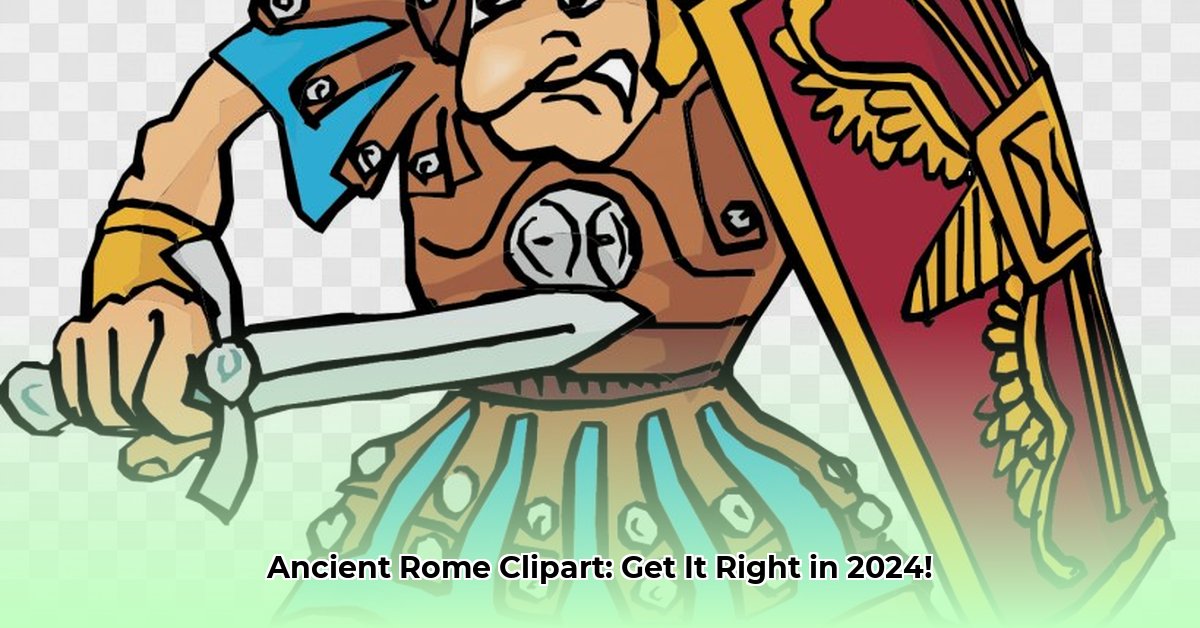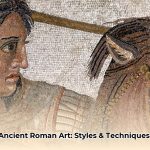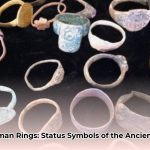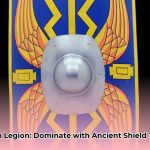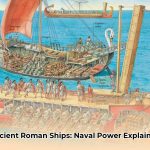You need visuals of Ancient Rome, perhaps for an educational project, a dynamic presentation, or simply to explore magnificent historical art. But hold on! Sourcing reliable Ancient Rome clipart is more intricate than you might imagine. This comprehensive guide serves as your essential roadmap, ensuring the Roman historical imagery you use is authentic, precise, and genuinely impactful. We’re here to help you distinguish accurate depictions from potentially misleading ones, safeguarding your project’s historical integrity.
Looking for more? This ancient rome clipart collection could be helpful. The critical question, “Ancient Rome Clipart: What Are The Accuracy Concerns?”, is paramount for anyone leveraging these widely available digital resources. Think of us as your digital history companions, dedicated to preventing accidental historical inaccuracies — like mistakenly portraying medieval figures within a Roman Empire context. This resource incorporates insights from various perspectives, highlighting common pitfalls in ancient civilization images. Nobody wants a Roman Centurion adorned in incorrect armor, or the Colosseum depicted with modern features – yet these errors occur surprisingly often! This guide is your definitive resource for achieving historical precision and creating visually compelling, accurate materials. So, ready your modern tools, and let’s delve into navigating the complex world of Roman historical accuracy in visual media.
The Digital Forum: Exploring Ancient Rome Visuals
When you search for Ancient Rome visuals, a massive array of images across myriad platforms awaits. Expect to see iconic figures like Julius Caesar or Emperor Augustus leading their legions. Architectural representations consistently feature grand columns, majestic amphitheaters, sprawling aqueducts, and intricate mosaics. And, of course, classic Roman cultural symbols abound: laurel wreaths, the revered Roman eagle, distinctive gladiatorial helmets, and intricate scrollwork.
These educational graphics commonly appear as vector graphics (scalable without quality loss) or in widely compatible raster formats like JPG, PNG, and GIF (which may pixilate when enlarged). Their accessibility and ease of use mean they are readily available for diverse applications, from school projects to professional presentations. However, sheer convenience does not equate to a reliable representation of history. The fundamental question remains: Are these readily available digital resources always trustworthy for historical accuracy?
Common Pitfalls in Ancient Rome Clipart: Spotting the Errors
Historical authenticity isn’t always the primary concern for creators or sharers of ancient historical imagery. Several common inaccuracies plague readily available clipart:
- Anachronisms: This is perhaps the most common error. You might encounter a Roman legionary wearing segmented armor (lorica segmentata) from the 1st or 2nd century CE depicted in a scene from the Roman Republic (e.g., 2nd century BCE), where chainmail (lorica hamata) or scale armor (lorica squamata) would be more appropriate. Another example might be a Roman citizen using a printing press, an invention from millennia later.
- Cultural Blending: Images sometimes indiscriminately mix elements from different ancient cultures. It’s not uncommon to see Greek columns next to Egyptian obelisks within a scene labeled “Ancient Rome,” without proper historical context or explanation for their presence. Similarly, a character that looks more like a Trojan warrior might be labeled a Roman gladiator.
- Misrepresentation of Daily Life: Clipart can oversimplify or glamorize Roman life. It might depict all citizens as affluent and well-dressed, ignoring the vast socioeconomic disparities, the prevalence of slavery, or the often-cramped living conditions of the poor. Such depictions distort the true social fabric of Rome.
- Artistic License vs. Historical Fact: While artistic interpretation is valuable, some clipart takes too much liberty, producing fantastical or overly stylized visuals that bear little resemblance to accurate historical records or archaeological findings. The artistic quality also varies widely, which directly impedes the consistent and credible visual representation of the past.
The prevalence of inaccurate Ancient Rome graphics raises a crucial question: Who is ultimately responsible for these issues? Often, it stems from designers prioritizing aesthetics or speed over meticulous research, or simply a lack of specialized historical knowledge. This variance highlights a key point: not everything you encounter online, even if visually appealing, should be taken as fact.
The Nuance of Rome: Avoiding Historical Oversimplification
Modern interpretations of Ancient Rome can inadvertently portray it as either overly glamorous or deceptively straightforward, distorting its true historical complexity. It is easy to be drawn to images that only highlight powerful armies and monumental constructions. Yet, these digital history resources can unintentionally obscure:
- Daily Lives: The nuanced routines, struggles, and joys of ordinary Roman citizens—from artisans to farmers.
- Social Structures: The intricate hierarchy of patricians, plebians, equestrians, freedmen, and slaves, and how these roles shaped society.
- Regional Variations: The distinct cultural practices, architectural styles, and local governance across the vast and diverse Roman Empire, which spanned continents.
- Political Evolution: The dramatic shift from a Republic to an Empire, and the political machinations that defined each era.
- Challenges and Decline: The internal conflicts, economic pressures, and external threats that eventually contributed to the Empire’s transformation and decline.
A truly comprehensive visual representation should strive for a more complete and nuanced narrative, acknowledging the full spectrum of Roman existence, not just its most grandiose elements.
Understanding Clipart Usage Rights: Navigating the Legal Landscape
Before that seemingly “free” image of a Roman Senator gets copied and pasted onto your website or into your academic project, a crucial step involves understanding clipart usage rights and copyright laws. These permissions can be remarkably complex and vary greatly depending on the source. It’s imperative to meticulously review the fine print, verify the original source of the image, and double-check what specific uses are permitted.
Key aspects to consider for copyright guidelines include:
- Public Domain: Images whose copyrights have expired, making them free for any use. Be wary of modern adaptations or digital enhancements that may have new copyrights.
- Creative Commons (CC) Licenses: These vary widely, from requiring attribution (CC BY) to restricting commercial use (CC NC) or derivative works (CC ND). Always check the specific CC license applied.
- Royalty-Free (RF): You pay a one-time fee, then use the image multiple times without further royalties, though restrictions on usage (e.g., print runs, specific platforms) may still apply.
- Rights-Managed (RM): Specific usage rights are purchased for a particular purpose and time. This is often used for high-value commercial projects.
Neglecting to verify these permissions could lead to unforeseen intellectual property or legal complications. Diligence in this area is as important as historical accuracy.
Your Guide to Verifying Ancient Rome Clipart: Practical Steps for Accuracy
So, how can you effectively navigate these visual challenges and ensure the accuracy of your Roman Empire visuals? What proactive steps can various individuals and organizations take to enhance the quality and reliability of graphic representations of Ancient Rome? Let’s break it down into actionable steps.
Actionable Steps to Verify Your Ancient Rome Clipart
To confidently verify your ancient Roman culture clipart for historical accuracy, follow these practical steps:
- Source Evaluation: Begin by critically assessing the website or platform offering the clipart. Does it have a reputation for providing accurate historical information? Look for an “About Us” section that details their sourcing methods, expert review processes, or partnerships with academic institutions. A clear policy regarding image authenticity and sourcing is a strong indicator of reliability.
- Cross-Reference Visuals: Always compare the clipart item with depictions from multiple trusted, scholarly sources. Consult museum websites known for their extensive Roman collections (e.g., The British Museum, The Metropolitan Museum of Art, Museo Nazionale Romano), peer-reviewed scholarly articles, or thoroughly vetted academic history books. This cross-verification is a cornerstone of historical research.
- Contextual Analysis: Does the visual accurately reflect the specific time period, social class, geographical region, and historical setting it claims to portray? For instance, a gladiator’s sandal from 200 BCE should not appear identical to one from 100 CE; such minute details – armor types, clothing styles, hairstyles, architectural elements, or even coinage depicted – are critical indicators of accuracy.
- Attribution Check: Even when an image is labeled “royalty-free” or “public domain,” always scrutinize the licensing terms. Some licenses require explicit attribution to the creator (e.g., “Image by [Artist Name/Website]”), while others might impose restrictions on commercial use or modifications. Understanding these copyright guidelines is essential for ethical and responsible use.
- Reverse Image Search: Utilize tools like Google Images, TinEye, or PicMonkey to perform a reverse image search. This allows you to see where else the image appears online, potentially revealing if it has been mislabeled, altered, or used in an inaccurate context previously. This can uncover common errors in popular visual assets and help trace an image back to its original source.
Stakeholder Recommendations: A Collaborative Approach to Visual History
Ensuring the accuracy of Ancient Rome graphics is a shared responsibility, requiring a collaborative effort across various fields. Here’s how different stakeholders can contribute effectively:
| Stakeholders | Short-Term (0-1 Year) | Long-Term (3-5 Years) |
|---|---|---|
| Educators | Carefully verify the accuracy of any visuals intended for classroom use, comparing them against reliable historical sources like archaeological records or academic texts. Encourage students to critically analyze visual sources as part of their learning process, treating illustrations as discussion starters rather than unquestionable facts. | Collaborate with historians, museum curators, and digital artists to curate and build comprehensive, historically accurate image collections specifically designed for educational use. Advocate for the development of open-source historical image databases that not only provide verified visuals but also offer detailed historical context and correct common visual errors, serving as a trusted repository for accurate learning materials. Foster visual literacy skills. |
| Designers/Content Creators | Always confirm copyright and usage rights for each image before incorporation. Prioritize historically accurate depictions and seek direct feedback from historical experts or academics for significant projects. Actively avoid reinforcing stereotypes or disseminating inaccurate content by cross-referencing visual details. | Contribute to establishing industry-wide standards and best practices for historical precision in visual media, perhaps through professional organizations or open-source initiatives. Promote the creation and widespread use of varied, nuanced images that effectively represent the genuine complexity and diversity of Roman society, fostering a richer, more authentic understanding of the past. Invest in ongoing historical research and specialist consultation for all new visual content. |
| Curriculum Developers | Integrate visually rich learning modules into educational programs, emphasizing the critical analysis of visual sources to engage diverse learners effectively. Develop explicit image selection guidelines for educators, focusing on accuracy, contextual relevance, and appropriate usage, ensuring resources are pedagogically sound. | Establish lasting partnerships with digital archives, historical institutions, and cultural heritage organizations to gain access to and promote high-quality, verified visual resources for educational curricula. Advocate for robust, integrated visual resource strategies that deepen historical engagement, enhance critical thinking, and support a more comprehensive understanding of ancient civilizations across all educational curricula, from K-12 to higher education. |
| Students | Practice source evaluation skills diligently when selecting visuals for personal or academic projects. Utilize images as prompts for creative and research-based assignments, focusing on factual representation rather than mere aesthetic appeal. Develop a habit of questioning and verifying visual information encountered online. | Cultivate advanced digital literacy skills, including sophisticated image analysis, verification techniques, and ethical digital citizenship. Potentially contribute to digital archives by creating and curating student-generated visualizations that adhere to rigorous historical accuracy standards, perhaps through collaborative projects with history departments or local museums, becoming producers of reliable historical content rather than just consumers. |
| Gamification/Entertainment | Leverage available visual assets for game design, virtual reality (VR) experiences, augmented reality (AR) applications, and other immersive digital environments, while being meticulously mindful of their historical basis. Prioritize consultations with historians to ensure foundational accuracy in character, setting, and props. | Develop highly immersive and meticulously historically accurate VR, AR, and interactive digital recreations of Ancient Rome. These ambitious projects should incorporate painstakingly detailed graphics, authentic architectural renderings, and interactive elements, aiming for both unparalleled entertainment and profound, authentic historical representation, blurring the line between education and engagement for a global audience. Invest in photogrammetry of actual artifacts for maximum realism. |
Final Reflections on Ancient Rome Clipart: Upholding Historical Integrity
Using Ancient Rome clipart can significantly enhance your projects, transforming abstract historical narratives into tangible, engaging experiences. However, this powerful visual tool demands careful scrutiny. Avoid the common pitfall of simply grabbing the first image you find online. A little dedicated research goes a long way in ensuring your visual content is accurate, respectful, and truly stunning. After all, nobody wants to see a Roman gladiator holding a smartphone, do they?
By conscientiously applying these verification steps and advocating for collaborative responsibility, you’re not just selecting an image; you are upholding historical integrity, empowering deeper and more accurate educational experiences, and building trust with your audience. It’s truly about choosing your educational materials and digital media wisely, ensuring that the past is represented with the fidelity it deserves.
- Unlock insights on ancient roman art paintings: Styles, techniques, historical context - August 18, 2025
- Lost Roman rings? Unveiling ancient Roman rings’ status in society [Context Reference] - August 18, 2025
- Decoding the Canvas: Ancient Rome Drawings Visualize Painting Techniques [Insights] - August 18, 2025
